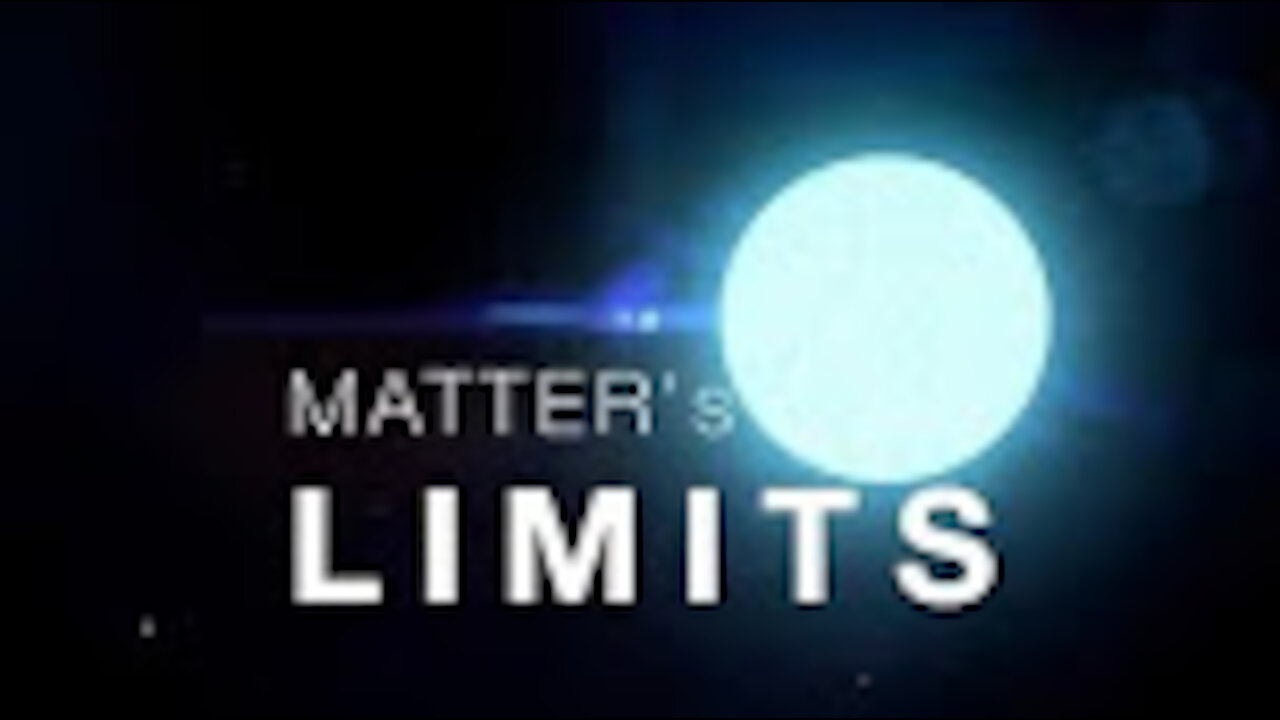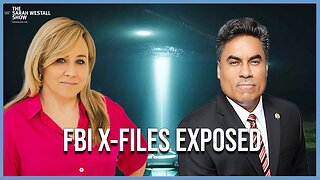Premium Only Content

NASA's NICER Tests Matter's Limits
Matter in the hearts of neutron stars – dense remnants of exploded massive stars – takes the most extreme form we can measure. Now, thanks to data from NASA’s Neutron star Interior Composition Explorer (NICER), an X-ray telescope on the International Space Station, scientists have discovered that this mysterious matter is less squeezable than some physicists predicted.
The finding is based on NICER’s observations of PSR J0740+6620 (J0740 for short), the most massive known neutron star, which lies over 3,600 light-years away in the northern constellation Camelopardalis. Previous observations place the neutron star’s mass at about 2.1 times the Sun’s.
At a neutron star’s surface, an atmosphere of hydrogen or helium rests on an iron crust. A mile or so down is the outer core, where atoms brake down into their building blocks: neutrons, protons, and electrons. Here, the immense pressure has crushed together protons and electrons to form a sea of mostly neutrons – packed together at up to twice the density of an atomic nucleus.
But what form does matter take in the inner core? Is it neutrons all the way down, or do the neutrons break into their own component parts, called quarks?
In traditional models of a typical neutron star, one with about 1.4 times the Sun’s mass, physicists expect the inner core to be mostly filled with neutrons. The lower density ensures that neutrons remain far enough apart to stay intact, and this inner stiffness results in a larger star.
In more massive neutron stars like J0740, the inner core’s density is much higher, crushing the neutrons closer together. It’s unclear whether neutrons can remain intact under these conditions or if they instead break down into their constituent parts, called quarks. Theorists suspect they shatter under the pressure, but many questions about the details remain. To get answers, scientists need a precise size measurement for a massive neutron star. A smaller star would favor scenarios where quarks roam freely at the innermost depths because the tinier particles can be packed more closely. A larger star would suggest the presence of more complex forms of matter.
Two teams used different approaches to model J0740’s size, getting results of around 15.4 miles (24.8 kilometers) and 17 miles (27.4 kilometers) across. The two results overlap significantly within their uncertainties, ranging from 14.2 to 17 miles (22.8 to 27.4 kilometers) and 15.2 to 20 miles (24.4 to 32.6 kilometers), respectively.
The J0740 result, combined with a previous NICER measurement of pulsar J0030+0451 and other multimessenger observations disfavor more squeezable models of neutron stars, including versions where the interior is a sea of quarks. J0740’s mass and size also pose problems for less squeezable models, which tend to be very neutron-rich.
Recent theoretical models propose some alternatives, such as inner cores containing a mix of neutrons, protons, and exotic matter made of quarks or new combinations of quarks. Future observations will help physicists narrow the possibilities even further.
Music: "Question Time" from Universal Production Music
Video credit: NASA's Goddard Space Flight Center
Scott Wiessinger (USRA): Producer
Jeanette Kazmierczak (University of Maryland College Park): Lead Science Writer
Chris Smith (USRA): Producer
Chris Smith (USRA): Lead Animator
Barb Mattson (University of Maryland College Park): Narrator
Zaven Arzoumanian (NASA/GSFC): Science Advisor
Sharon Morsink (University of Alberta): Visualizer
Scott Wiessinger (USRA): Animator
This video can be freely shared and downloaded at https://svs.gsfc.nasa.gov/138312 . While the video in its entirety can be shared without permission, some individual imagery may have been obtained through permission and may not be excised or remixed in other products. Specific details on stock footage may be found at https://svs.gsfc.nasa.gov/138312 . For more information on NASA’s media guidelines, visit https://nasa.gov/multimedia/guidelines .
If you liked this video, subscribe to the NASA Goddard YouTube channel: https://www.youtube.com/NASAGoddard
Follow NASA’s Goddard Space Flight Center
· Instagram http://www.instagram.com/nasagoddard
· Twitter http://twitter.com/NASAGoddard
· Twitter http://twitter.com/NASAGoddardPix
· Facebook: http://www.facebook.com/NASAGoddard
· Flickr http://www.flickr.com/photos/gsfc
-
 0:39
0:39
Buzzvideos - EN
4 years agoCat tests limits of friendship with dog!
10 -
 2:04
2:04
KJRH
3 years agoPlanning standardized tests
29 -
 5:05
5:05
Calculus for Engineering
4 years agoCommon Occuring Limits (Calculus)
611 -
 0:57
0:57
STLNutritionDoc
4 years agoTests and rules
302 -
 0:10
0:10
borjan
3 years agoLove has no limits
58 -
 5:51
5:51
The Scoop - News For Free Thinkers
3 years agoTerm Limits Advocate Shreds Out-Of-Touch Career Politicians
1.38K7 -
 LIVE
LIVE
Sarah Westall
1 hour agoX-Files True History, Project Blue Beam, Cabal Faction War w/ Former FBI Agent John DeSouza
459 watching -

Dr Disrespect
8 hours ago🔴LIVE - DR DISRESPECT - NEW PC VS. DELTA FORCE - MAX SETTINGS
92.4K23 -
 49:04
49:04
Lights, Camera, Barstool
1 day agoIs The Monkey The Worst Movie Of The Year?? + Amazon Gets Bond
8.23K1 -
 24:19
24:19
Adam Carolla
20 hours agoDiddy’s Legal Drama Escalates, Smuggler Caught Hiding WHAT? + Philly Eagles & The White House #news
15.8K3